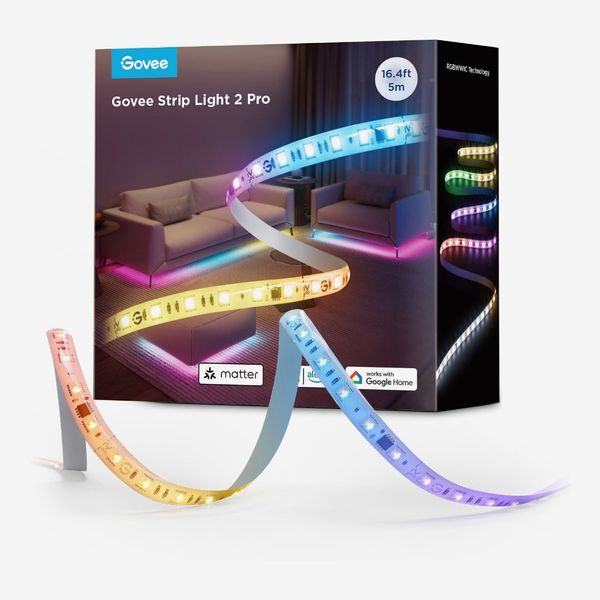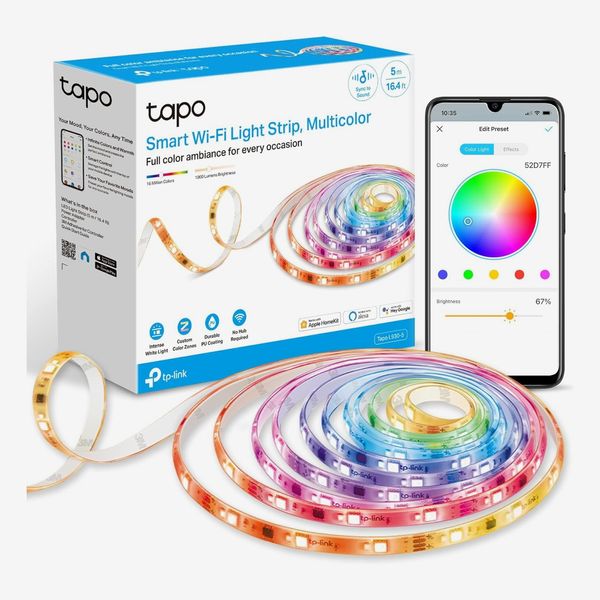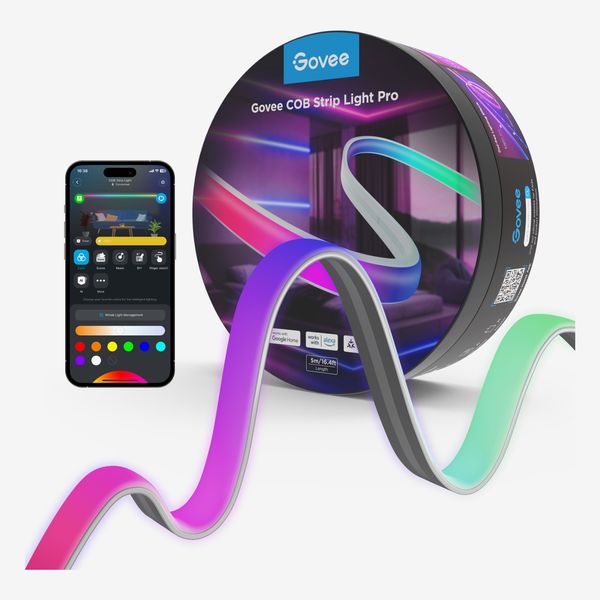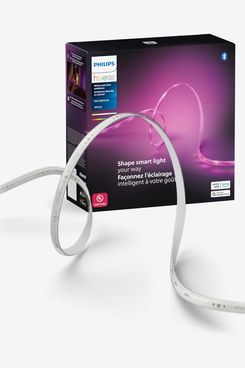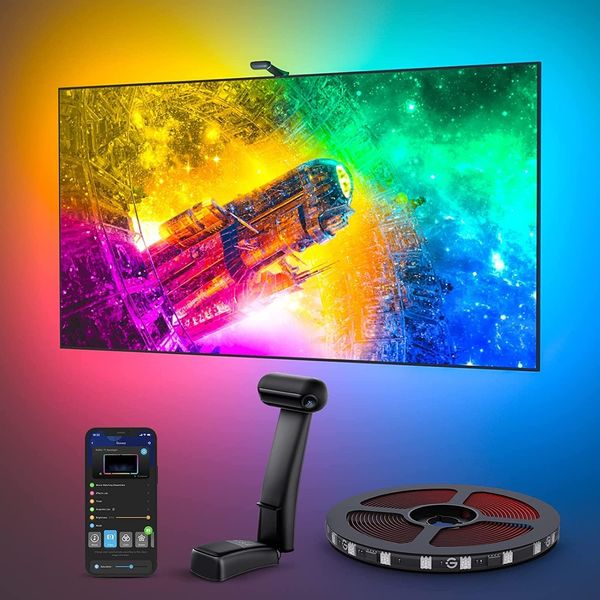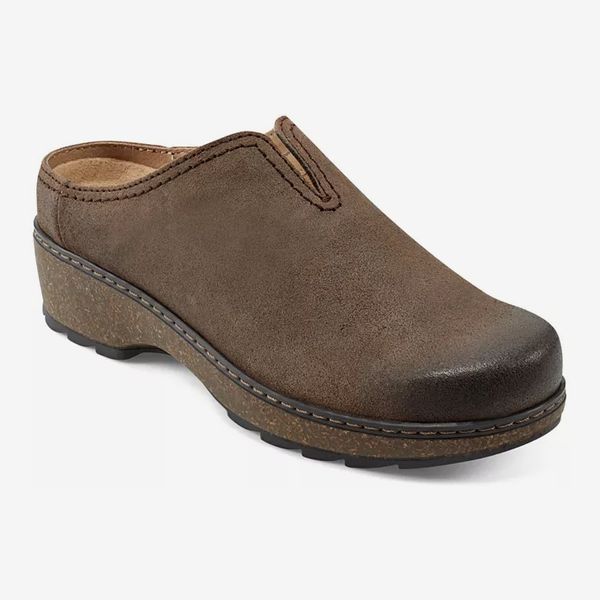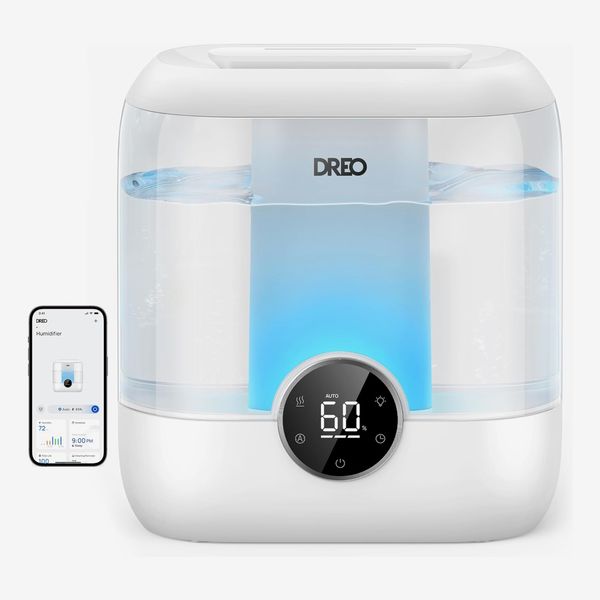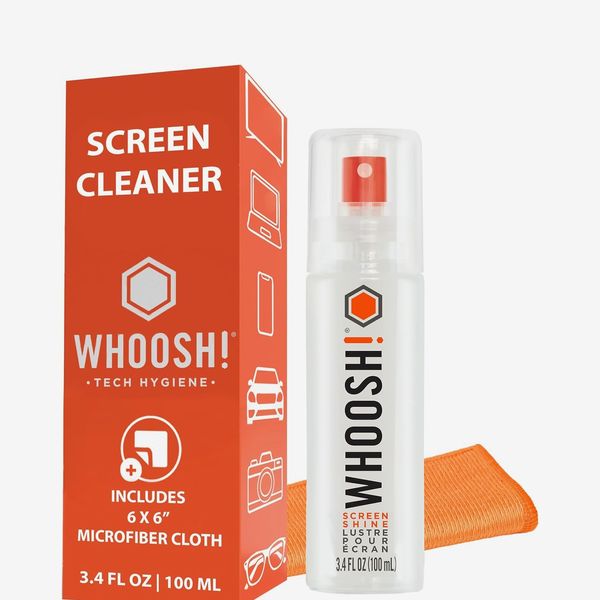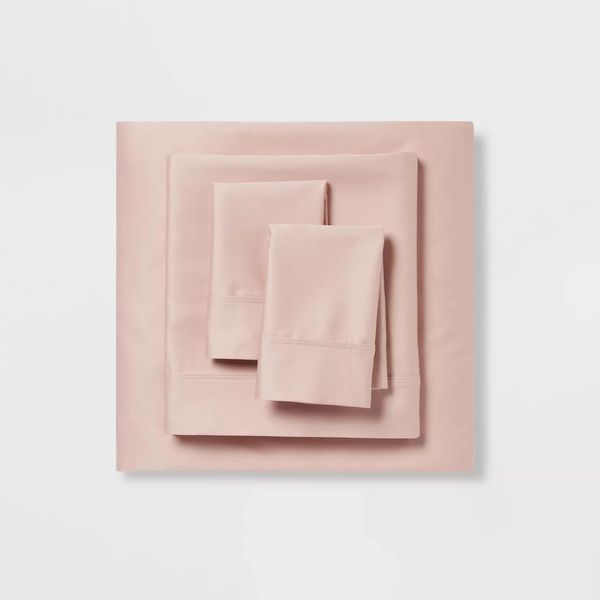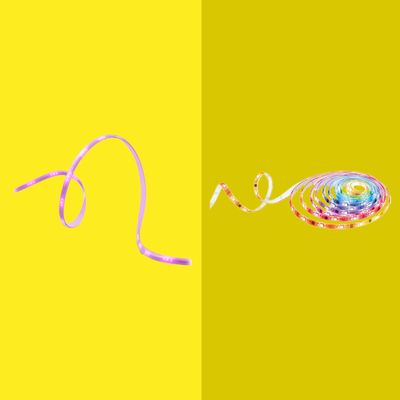
In this article
Whether you’re looking to improve visibility under your kitchen cabinets, make your staircase a bit safer, or illuminate your record collection with colored lights that change to the beat of the music, smart LED strips are a fun way to experiment with transforming the vibe of a space or a splash of accent lighting without the need for tools or a big budget.
Smart LED strips are not a simple plug-and-play replacement for a preexisting device you already have in your home. These strips attach semi-permanently via 3M adhesive (as tacky as a Command strip), which is not meant to be reused — and may strip paint or lacquer from any surface they’re removed from. They last for at least ten years of typical usage, but this does make upgrading down the road a royal pain. So, it’s wise to make sure that the one you pick has the features you may be curious about in addition to providing the lighting characteristics that you need. To that end, I researched every major smart lighting company’s offerings and tested eight top competitors in order to find which features separate the best from the merely acceptable.
What we’re looking for
Addressable
Because LED strips are more for fun and experimentation, I recommend looking for “addressable” strips — sometimes listed as “IC” for independent control. These allow different colors to be shown in different parts of the strip at the same time in order to simulate effects like a smoldering fireplace or a dazzling aurora borealis. Even if you’re not completely sold on the utility of this, it is nice to have the option to play around. Non-addressable strips can only show a single color at a time across the entire length, so they’re only helpful for plain accent lighting.
LED array type
You’ve probably heard of RGB as an acronym for red, green, and blue — the three primary colors of light that can be mixed in varying levels to represent any other color of the visible light spectrum. Blending all three colors at full blast creates the illusion of white, which works well at the scale of a TV-screen pixel, but is less convincing (and less bright) at the size of an LED strip. That’s why I recommend looking for strips that have at least an RBGW LED array, which adds a dedicated white LED to produce the truer, brighter whites necessary to provide actual illumination in a space. RGBWW arrays add individual warm and cool white LEDs for even more brightness and tunability.
Cuttable
Many strips can be cut down to size, but some feature cut points that are more closely spaced than others, making it easier to obtain a precise fit.
Matter certified
Getting the most out of an LED strip’s color-changing, beat-matching potential requires using its own dedicated app, so cross-platform compatibility is not as critical here as it would be with a more utilitarian smart lightbulb. The good news is that Matter certification makes it easy to determine which products will work with whatever major smart home technologies you already use — whether that’s Apple’s Homekit (and Siri), Google Nest, Amazon Alexa, or something else. All the major smart home brands plan to adopt this standard going forward, but it’s not necessarily backward compatible, so it’s hard to recommend lights that aren’t already certified.
Best LED strip lights overall
Addressable: Yes | LED array type: RGBWW | Cuttable: Yes | Matter certified: Yes
If the fun part about light strips is the ability to experiment with all manners of colors and settings, then it stands to reason that the strip with the most colors and settings to offer would be the one to beat. Not only is that true of Govee’s Light Strip Pro 2, but the LSP2 happens to be one of the densest, brightest, most color-accurate, and easiest-to-install strips of all the options I considered. And while other strips offer the ability to sync to music using your smartphone’s microphone, Govee’s light controller has a built-in microphone for this purpose so you don’t have to leave your phone open on a specific app to achieve this effect. The fact that this strip also has support for every major smart home platform (via Matter certification) and is part of one of the biggest ecosystems in colored ambient lighting makes it an easy choice.
Overall, the LSP2 is pretty similar to the slightly cheaper and perennially popular Govee M1, but the LSP2’s superior color rendering and light quality make it worth the extra buck per foot. As an RGBWW strip, the LSP2 has dedicated white LEDs for both warm and cool whites (the RGBW M1 only has a single white LED), and it also has an upgraded 16-bit color processing chip that allows for more seamless and subtle transitions between colors and shades. It sounds silly, but I felt like I could see a difference when using these upgraded “LuminBlend” scenes compared to the regular ones. The other advantage of the LSP2 is that it has clearly labeled cut markings every four inches, whereas the M1 can technically be cut along the same intervals — after every IC chip — but lacks clear markers.
The biggest downside to the LSP2 is also its biggest asset: a wide-ranging, cluttered Govee app with a tiny font that inexplicably features a lighting-based social-media network with its own Discover page and trending hashtags alongside an entire store’s worth of Govee products to purchase — complete with its own loyalty program and gamified coupon system. It works fine as a lighting controller, but all that other stuff is not present in competitors’ apps and, in my opinion, cheapens the overall experience. It’s possible to bypass the app entirely if you use a voice assistant like Alexa, Google, or Siri to control your strips, but you may lose out on some functionality, like the ability to recall specifically named scenes using Siri. Similarly, Apple Homekit is supported through Matter but provides only basic brightness and color switching, not dynamic scenes.
Best (less-expensive) LED strip lights
Addressable: Yes | LED array type: RGBW | Cuttable: Yes | Matter certified: No (but it’s compatible with all platforms)
If having the most exciting lighting scenes and accessories isn’t a priority, then you can save a few bucks by going with the Tapo Smart LED Light Strip L930-5 — which is often on sale for less than its $50 MSRP. With about half as many LEDs per foot (I counted 9 to the Govee’s 18), it’s not as bright as Govee’s offerings and, unlike the Govee and Hue offerings, won’t be enough to light up a room on its own. But it’s fine for accent lighting use, and you’re unlikely to have complaints if you’re not comparing it head-to-head with a brighter strip. Otherwise, you get the same amount of adjustability for colors, brightness, and transitions, as well as support for all major smart home platforms (although it’s not officially Matter certified, it is certified separately with Apple, Google, and Amazon). Tapo’s app doesn’t offer nearly as many preprogrammed lighting scenes and modes as Govee’s, but it does have quite a few to play around with, and you can also make your own if you’re so inclined. I also must confess that despite having far fewer features and settings, I much prefer the Tapo app’s simpler design to Govee’s maximalist app.
The only consistent issue that user reviewers bring up is that the adhesive may feel insufficiently sticky during the installation process, even though it’s the same 3M adhesive used on all the other strips. In any case, it’s good to clean the intended application surface and wait for it to dry completely before installing any strip.
Best LED strip lights for visible mounting
Addressable: Yes | LED array type: RGBW | Cuttable: Yes | Matter certified: Yes
Looks aside, the COB strip also has a brightness advantage owing to the sheer density of LEDs Govee managed to cram into this thing. Whereas the LSP2 and M1 strips are denser than most at 60 LEDs per meter, the COB strip packs a whopping 1,260 LEDs per meter. As a result, it can light up a whole room as well as any overhead light fixture at maximum brightness. The density of the LEDs also makes for a much smoother-looking light overall — it feels more like a continuous neon light than a marquee. It comes in lengths of up to 16.4 feet (5 meters), but cannot be extended beyond that.
Clear-coated LED strips like the Govee Light Strip Pro 2 have the benefit of being easier to install because of how thin they are, but they tend to be a bit glaringly bright and difficult to look at head-on. Suppose you’re planning to stick a lighting strip directly onto a wall or piece of furniture (such as the edge of your desk), where it’s possible to make direct eye contact with the strip. In that case, I recommend Govee’s COB Strip Light Pro, which features a wider, light-diffusing silicone covering. It has all the same features as the Light Strip Pro 2, but it is much easier on the eyes when lit up and turned off. It’s not quite as techy-looking and could even be mistaken for molding if you’re not paying close attention.
Best LED strip lights for accent lighting
Addressable: No | LED array type: RGBWW | Extendable: Yes | Cuttable: Yes | Matter certified: Yes
Phillips Hue is the most responsive and reliable smart lighting system out there because it doesn’t rely on the internet to control its lights. The downside is that you will need to plug a stand-alone $60 Hue Bridge into your router to generate its proprietary Zigbee network. But if you already have a Bridge and use Hue for your other smart bulbs, staying in the Hue ecosystem for your accent lighting needs makes a lot of sense. Unfortunately, its LED strip offerings aren’t quite as robust as the competition’s.
The Hue Solo is the best value in Phillips’ lineup. It’s an RGBWW strip that produces accurate whites and colors and is capable of getting superbright. This makes it a great candidate for mounting under cabinets or behind furniture. But despite being more expensive per foot than all the other similar strips we considered, it is a non-addressable strip, which means it can only display one solid color at a time. This isn’t an issue if you’re just using it to improve visibility on your stairs or countertop, but it does render it incapable of experimenting with fun colors in the context of a TV room or gaming rig.
If you want more flexibility for playing around and want to stick within the Hue ecosystem, then the Gradient series is your only option. It’s similar to Govee’s COB Light Strip Pro in design and performance, but at $180 for 80 inches (extendable up to 120 inches), the Gradient costs over 30 percent more than the COB for less than half the length. Its build quality is superb, but it would be easier to recommend if the pricing were more in line with the competition.
Best TV backlight
Addressable: Yes | LED array type: RGBW | Extendable: Yes | Cuttable: Yes | Matter certified: No
If you’re looking for a way to make your TV feel bigger without actually going out and getting a huge screen, then a TV backlight is a relatively affordable way to make your existing TV feel more immersive. It’s basically an LED strip that sticks to the backside of a TV and mirrors the onscreen colors as they change. The effect is especially immersive for action movies, video games, and animated films that feature lots of bright colors but is not as compelling when watching period dramas or reality TV. Out of the handful of options out there, the Govee Envisual T2 (available for 55-inch to 65-inch TVs and 75-inch to 85-inch TVs) offers the best performance for the price, is easy to set up, and has the ability to control other Govee lights and strips you may already have. Like Govee’s other LED strips, it offers more LEDs per inch than competitors, and the camera it uses to read the TV screen is actually two cameras, giving it a more accurate and complete view of the onscreen content. I also appreciated that everything you need to install it and get it going is included in the same, relatively affordable package.
The fact that the Envisual T2 relies on a camera to gather data means that there is a very slight, albeit perceptible lag between what’s happening onscreen and what happens with the lights. This is especially noticeable when viewing content that has fast cuts — such as a trailer — or where lots of stuff is happening simultaneously — such as in a video game. And while it has the ability to automatically turn itself on and off based on what the camera detects (via the “Blank Screen” setting), I found this to be pretty unreliable. The reflection of filtered sunlight through window blinds off of my TV’s black screen was enough to prevent the “low brightness” detection trigger from turning off the light strip. I was able to get it to work using “same hue” — which turns it off if the color doesn’t change for an extended period of time — but this setting takes at least two minutes to activate. This would be less of a problem if this strip offered Matter support so I could use my Apple TV’s Siri functionality to control the lights, but the Envisual T2 only supports Alexa and Google Home as of this writing.
Lag is no problem with the Phillips Hue Play Gradient ($250 to $300 depending on TV size) because it gets its signals directly from the source via HDMI. But the HDMI box is a separate, $350 accessory and you still need a $60 Bridge to get the whole thing to work. If you don’t mind the cost and want the best possible performance, the Hue is your best bet.
The Strategist is designed to surface useful, expert recommendations for things to buy across the vast e-commerce landscape. Every product is independently selected by our team of editors, whom you can read about here. We update links when possible, but note that deals can expire and all prices are subject to change.
